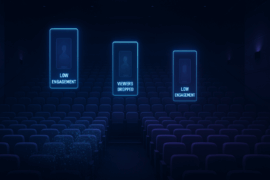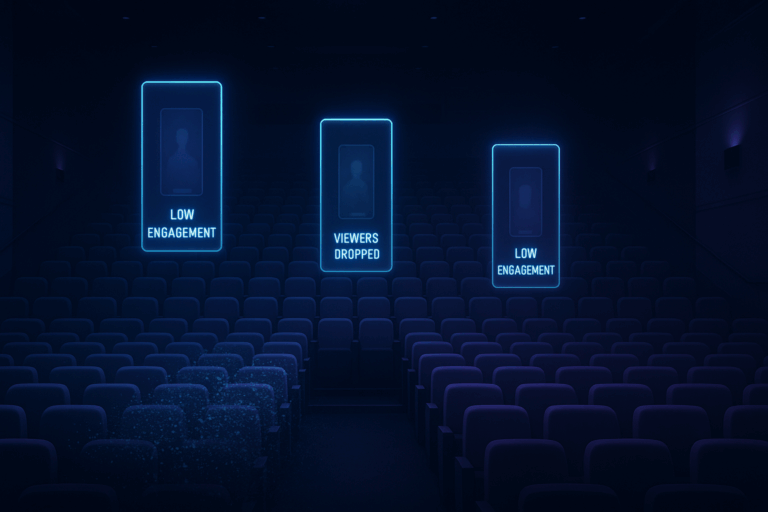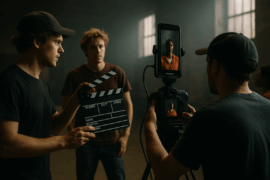On your screen, it’s all glam: stolen glances, forbidden kisses, dramatic slow-motion exits. But behind the scenes of the vertical drama industry, a growing chorus of actors is whispering the same thing:
“This isn’t the dream job it looks like.”
Welcome to the other side of the vertical revolution—the one full of frantic schedules, AI-written scripts, emotional burnout, and the creeping fear that fame in portrait mode might come at a price.
🎬 The Pay is Great… But the Scripts?
Let’s start with the money. According to a Business Insider report, some vertical actors are pulling in $1,000 to $1,500 per day, which, on paper, sounds amazing—especially in an industry notorious for underpaying performers.
But actors are quick to point out: the quality of the work often doesn’t match the paycheck.
“The worst scripts I’ve ever seen,” one actor wrote on Reddit.
“Characters switch motivations mid-scene. Whole plotlines contradict themselves. I’m 90% sure an AI wrote it overnight.”
And they might not be wrong. With production companies under pressure to pump out 40 to 80 episodes per series, many writers rely on algorithm-driven story templates. That means recycled dialogue, paper-thin characters, and arcs that feel more like clickbait than craft.
🧠 The Emotional Whiplash is Real
These aren’t slow-burn stories. In vertical dramas, everything is high-stakes, all the time. That means actors are expected to deliver gut-wrenching emotions—tears, rage, betrayal—multiple times per day. There’s no warm-up. No rehearsals. Just go.
“It’s like filming a telenovela on cocaine,” said one actor, who requested anonymity.
“You’re sobbing in a wedding dress at 9AM, getting fake-punched at 10, and dry-humping your scene partner by lunch. It’s relentless.”
Even seasoned professionals have admitted the pace leaves them emotionally depleted. There’s no time to build chemistry with co-stars. There’s barely time to learn lines. The industry expects raw, viral content—and fast.
🏃 Speed Kills: 12 Locations in 10 Days
Directors working in the vertical space are under constant pressure to film entire series in less than two weeks. One recent shoot for Audrey in Full Bloom involved 12 locations in 10 days, including an airport hangar, a strip mall, and three mansions—on a shoestring crew.
“It’s vertical soap meets guerrilla filmmaking,” one crew member joked.
“You pray no one trips over a light stand.”
But behind the laughter is a creeping concern: is the industry sacrificing sustainability for virality?
🕵️ Actors Are Disposable—So Don’t Complain
Perhaps the darkest truth? If an actor complains—about safety, scripts, scheduling, or even payment—there’s a line of fresh faces ready to take their place.
Vertical drama platforms thrive on newness. New faces. New scandals. New shows. There’s little incentive to invest in long-term careers or offer creative protections.
“They know you’re replaceable,” said an actress who left the industry after one year.
“If you push back, they just cast someone else—usually younger and cheaper.”
And because these shows don’t credit actors prominently and rarely get mainstream media coverage, performers often feel invisible, even as their faces rack up millions of views.
💔 When Fame Doesn’t Follow
You might be the star of a vertical hit, but that doesn’t mean Hollywood’s calling.
Because many vertical platforms don’t promote creators or highlight cast names, actors often find themselves weirdly famous but professionally stagnant—recognized in coffee shops, but ignored in casting rooms.
“I had 80 million views on one series,” one actor shared. “But when I went in for a network role, the casting director had no clue who I was. It’s like I don’t exist outside the app.”
🧼 So… Why Do They Keep Doing It?
Despite all of this, the work keeps coming. Because for many actors, vertical dramas are a lifeline: they offer decent pay, lead roles, and consistent work in an industry where most jobs are background or unpaid indie gigs.
Some even thrive in the madness. They embrace the camp, the chaos, the over-the-top cliffhangers. They know it’s not art, but it’s entertainment—and it pays.
But if the vertical industry wants to last, it may need to reckon with its darker underbelly.
Because the next big plot twist? Might be a mass exodus of the talent that made it rise in the first place.









